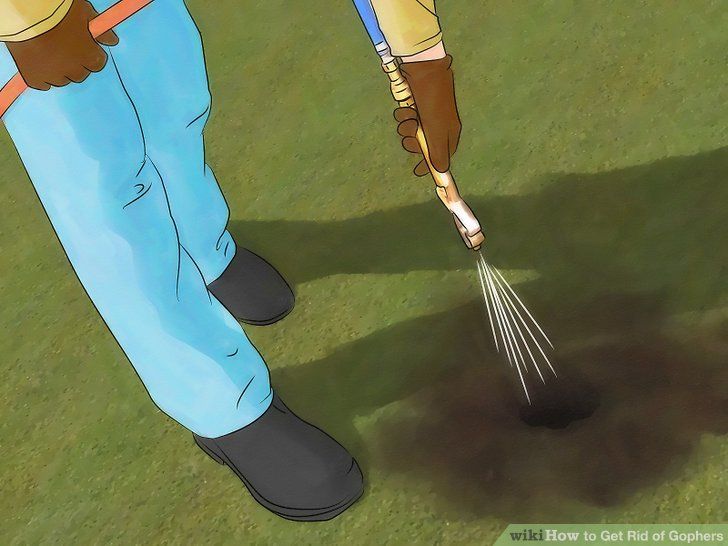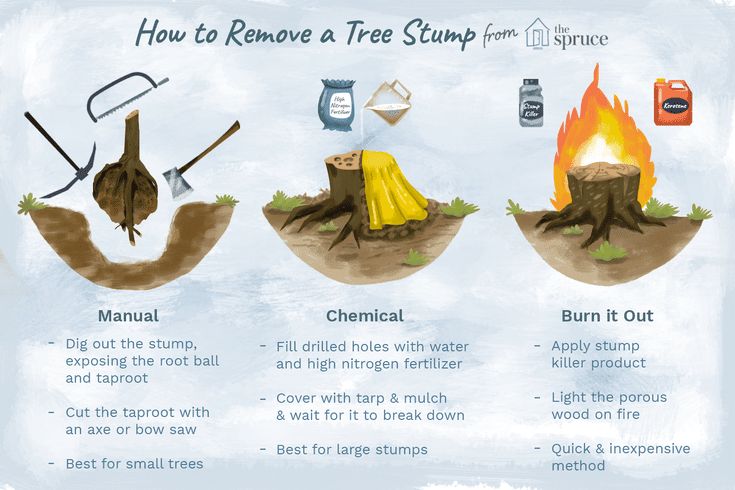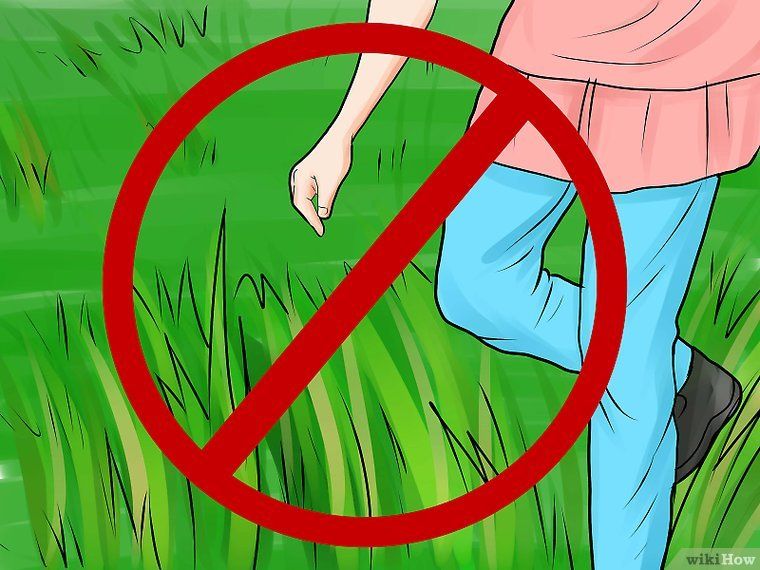Ruts on your trails
So what do you guys do about ruts on your trails from driving the ATV through? My land is heavy clay and it holds water like crazy. I know the answer is to stay off of them while wet but if I waited until the trails dried out it would be literally mid to late July and anytime it rains it will be soft and moist again. That would not allow much work to be done and I need the UTV for a lot of the stuff I do.
Some of my main trail is "ditched". Other parts are not. And once it is rutted it holds water literally forever. I stay off my side trails and just drive when I have to. For example last weekend when I planted apple trees I need the UTV to get trees, fencing, stakes, etc in to my spot.
What can be done both temporary and permanently to fix this? I've considered trying to fill up some of the large ruts with small straight trees and get them to sink into the ground so they don't tip up but yet fill in some of the rut and then spread the weight of the UTV along the tree. So you would be driving on the tree in the rut which would be recessed in the rut. I have no idea if that will work or not. My clay is real sticky so I thought it might work.
I have a logging scheduled in 2016 where I don't want to stick a ton of money into the trails at this point but I am starting to bottom out in places and need some help. Plus I know it would be expensive to fix it right with gravel or to ditch the entire thing.
.
This is how it begins (which I can handle):
Then it turns into this:
My worst part of the trail looks like this.
I understand this is a problem with not a lot of good answers. I am just looking to start a discussion on things I may not be thinking of to help this out. I've actaully thought about selling my land and cabin just because I am so annoyed with this darn clay. Thanks.
loads and loads of mulch during the logging in 2016???
Novemberforever said:
golf ball size gravel?
Click to expand.
..
1/2 mile of it? That is how long my main trail is. And I'm not expert but it would take a lot of it because it would push into the clay quite a bit.
bueller said:
loads and loads of mulch during the logging in 2016???
Click to expand...
Maybe? But a half mile of it? How deep would it need to go?
what about a tracked Argo?
I have a 6 wheel Bigfoot Argo that is way easier on my wet trails than the 4 wheeler. Put the tracks on I bet it would be a winner.
Put the tracks on I bet it would be a winner.
Long term solution is gravel -yes the larger stuff (roughly 1/2 as big as your fist). It will sink into the clay (not as badly as the smaller gravel), but it will take the use better than the bare soil. Biggest expense with gravel is the trucking cost. You would typically go about 4" deep for somehting like a driveway for a road vehicle. Something else to consider - just an idea here - is something like the old cordroads. I live on a gravelroad currently that passes thru an area that holds lots of water. The base of the road is old logs laid across the road and then gravel is laid on top. Every once in a while they set the grader a little too deep and catch a log and pull it up - that was how I found out about its construction. This constructions essentially allows the road to float as the ground shift. Maybe something to consider for your more worste case spots.
The base of the road is old logs laid across the road and then gravel is laid on top. Every once in a while they set the grader a little too deep and catch a log and pull it up - that was how I found out about its construction. This constructions essentially allows the road to float as the ground shift. Maybe something to consider for your more worste case spots.
If I have my math right that is 228 yards of material, at 1.4 tons per yard thats 320 tons or 16 truck loads assuming 20 tons per truck.
Rome wasn't built in a day. Wasn't paid for in a day either!
bat man said:
what about a tracked Argo?
I have a 6 wheel Bigfoot Argo that is way easier on my wet trails than the 4 wheeler.
Put the tracks on I bet it would be a winner.
Click to expand...
That is actually something I thought about but forgot to post about. I think they even make tracks for my Kawa Mule.
jwill1776 said:
If I have my math right that is 228 yards of material, at 1.4 tons per yard thats 320 tons or 16 truck loads assuming 20 tons per truck.
Click to expand...
What does a truck load cost assuming trucking is only 10 miles? Any idea? You still gotta spread it though. Wonder how many days he would have into that.
Wonder how many days he would have into that.
j-bird said:
Long term solution is gravel -yes the larger stuff (roughly 1/2 as big as your fist). It will sink into the clay (not as badly as the smaller gravel), but it will take the use better than the bare soil. Biggest expense with gravel is the trucking cost. You would typically go about 4" deep for somehting like a driveway for a road vehicle. Something else to consider - just an idea here - is something like the old cordroads.
I live on a gravelroad currently that passes thru an area that holds lots of water. The base of the road is old logs laid across the road and then gravel is laid on top. Every once in a while they set the grader a little too deep and catch a log and pull it up - that was how I found out about its construction. This constructions essentially allows the road to float as the ground shift. Maybe something to consider for your more worste case spots.
Click to expand...
I thought about the cord roads too. Like what loggers use by putting trees crossways. My only question is how do they install those efficiently and how would i do it?
j-bird said:
Rome wasn't built in a day.
Wasn't paid for in a day either!
Click to expand...
Very true. Gotta start somewhere. Just got to figure out what method is the best to build Rome.
BJE80 said:
What does a truck load cost assuming trucking is only 10 miles? Any idea? You still gotta spread it though. Wonder how many days he would have into that.
Click to expand...
Just checked my area, ballpark $26 per ton and $35 delivery per truckload, I'm sure costs vary widely by location.
I have the same problem. Last year the township redid (dug out) the ditch's. They were looking for a place to get rid of what they dug out. I took 20 truck loads, granted it was dirt, weeds, stone & some trash (but not much) but it was also free. Rented a tractor for a day and spread it on the low spots. Some places the trail was raised over a foot. It's not near as bad this spring but I still have more work to get them right.
Instead of creating an 8 foot wide trail, could you just put the gravel down in the tracks, so two strips 2 feet wide each would cut the amount of material needed in half.
kabic said:
Instead of creating an 8 foot wide trail, could you just put the gravel down in the tracks, so two strips 2 feet wide each would cut the amount of material needed in half.
Click to expand...
That is not a half bad idea. Just fill those areas in and then only drive on those areas.
tooln said:
I have the same problem.
Last year the township redid (dug out) the ditch's. They were looking for a place to get rid of what they dug out. I took 20 truck loads, granted it was dirt, weeds, stone & some trash (but not much) but it was also free. Rented a tractor for a day and spread it on the low spots. Some places the trail was raised over a foot. It's not near as bad this spring but I still have more work to get them right.
Click to expand...
That is a sweet deal. What do you plan on doing long term? What ideas have you had to fix it? Just brainstorming.
BJE80 said:
That is a sweet deal.
What do you plan on doing long term? What ideas have you had to fix it? Just brainstorming.
Click to expand...
Try to get more from them this year. I also live in a town that has 5 very large compost piles. I gotten much from them to fill holes & low spots in my plots. It take me about a hour to load, travel, unload & return to the pile, cost me my time and gas. I haul about 1500 lbs. per load. Once the plot is done it's trail time.
tooln said:
Try to get more from them this year.
I also live in a town that has 5 very large compost piles. I gotten much from them to fill holes & low spots in my plots. It take me about a hour to load, travel, unload & return to the pile, cost me my time and gas. I haul about 1500 lbs. per load. Once the plot is done it's trail time.
Click to expand...
Boy, if i start hauling trailers and doing trips back to my plots with fill I would need to fix my trails first. They would get destroyed even in summer and I would likely get stuck eventually. My plots need fill too.
kabic said:
Instead of creating an 8 foot wide trail, could you just put the gravel down in the tracks, so two strips 2 feet wide each would cut the amount of material needed in half.

Click to expand...
If you can get your hands on a smaller dump truck you can block the center of the tailgate just wide enough where stone won't fall in the center of the road and only in the ruts. We have done that before it saves a lot of time shoveling and moving stone around by hand.
From time to time we bring you tips from pro riders on how to set up your quad and go fast on a track. We know most of you don’t ride tracks and would rather learn how to ride better on trails. So, in this feature we will give you a few tips on how to properly conquer big obstacles you might encounter on the trail. Then, the next time you are out with your buddies they will be impressed with you as you make it over something in the trail without even slowing down to think about it.
RUTS: We like to ride just after it rains, but with a good rain usually comes ruts. On quads, it’s imperative to not let one side or the other of the quad fall into a rut. It’s best to approach the rut at a 90-degree angle and jump straight over it. You can approach it at a little bit of an angle if it has a small lip to help you out. Pull up on the front end just enough to get your front wheels past the rut and back on the ground. Having the front wheels on the ground quickly will help keep the rear wheels light and help clear the rut.
On quads, it’s imperative to not let one side or the other of the quad fall into a rut. It’s best to approach the rut at a 90-degree angle and jump straight over it. You can approach it at a little bit of an angle if it has a small lip to help you out. Pull up on the front end just enough to get your front wheels past the rut and back on the ground. Having the front wheels on the ground quickly will help keep the rear wheels light and help clear the rut.
HILLS: Take your time to find the hill or trail with the least obstacles in your way. Not making a hill-climb in some situations can turn ugly. On approach, have your line picked out and build just enough speed to make it to the top or over an obstacle. If you have enough speed, traction shouldn’t be an issue, and you can stand up to keep weight on the front end. Hills that have obstacles that require you to check up, should be separated into sections. Again, gain enough speed to clear the obstacle, then get on the throttle again while keeping your weight centered over the machine.
TURNING AROUND ON HILLS: If you find yourself not making it to the top of a hill, it’s best to call it early on. Try to stop in the widest area you can to turn around. It’s safest to turn the quad around without you sitting on it. As the quad comes to a stop, grab the front brake and step off the machine. Being on the upside of the machine is your safest out. Then, when standing next to the quad, you can easily roll the quad down and steer it to the right. Once the quad gets nearly perpendicular with the trail, you can turn the bars back to the left. This should have the quad facing downward. If not, lock the parking brake on and drag the front of the quad down the hill until you feel safe to ride it back down.
ROCKS: Riding over rocks is about line selection first and balance second. In most situations, it’s best to let the tires drive over rocks instead of letting the frame and skid plates scrape over them. If you do find a situation where the rocks have to be center-punched, do it with momentum. At first, keep your front end light and get enough speed so the rock will make it at least three-quarters of the way under your frame. Once your front tires hit the ground again, be ready with a steady throttle to drive off of them. If your quad is only 2WD, you have to hit them faster and be sure to keep weight off the rear of the quad when the rock slides to that section. If you have the ability to aim, remember, it’s better to hit the axle than it is to hit your chain or brake rotor.
At first, keep your front end light and get enough speed so the rock will make it at least three-quarters of the way under your frame. Once your front tires hit the ground again, be ready with a steady throttle to drive off of them. If your quad is only 2WD, you have to hit them faster and be sure to keep weight off the rear of the quad when the rock slides to that section. If you have the ability to aim, remember, it’s better to hit the axle than it is to hit your chain or brake rotor.
SIDEHILLS: Some sidehills can be taken by just moving your weight to the high side of the hill. But keep in mind, you might encounter a section that is more severe than the rest of it. For this section you want to get a little more speed through and keep an eye out for when it levels out and slow down just prior. Another thing to watch out for when riding on sidehills is, if you encounter a rock, root or square-edge bump on the upper side of the trail, you need to be ready for the quad to get even steeper and lean more aggressively for that split second.
LOGS: Getting over logs is about body position. Typically, you can ride over logs that are no bigger than the size of your tires. Approach the log square on, and with the front end, lightly blip the throttle to drive on top of the log. Before the log catches on your skid plate, let off the throttle and lean your body forward to help keep the quad moving forward. Just as your rear tires hit the log, another blip of the throttle should get you over it safely. If the log is larger than the diameter of your tire, again, approach it head-on. Stand on the rear grab bar as you drive the front tires onto the log. Then, get off the quad and push the rear tires up onto and over the log.
DEEP TWO-TRACK: Well-traveled trails will become two-track in some cases, and the deeper ones can catch your underbelly or swingarm. Approach them fast and move your bodyweight to the outside of the turn and let the side knobbies on your tires help drive you through.
SILT: On heavily traveled trails in the Southwest, we have what is called silt. It’s baby-powder-like dirt that takes many people by surprise, like quicksand of the desert. The key is to keep momentum up but only ride as fast as you have to without letting the fluff rise up and block your vision. Silt, like sand, gets rutted up, so you also want to ride to the side of the ruts to keep your underbelly from getting hung up.
If you think about your daily routine, you will see that there are many things that are often not part of your usual lifestyle: a trip that you once spontaneously undertook; a book that touched you; song that makes you laugh. Try to remember all the unusual things that have diversified your life. A monotonous routine at work, in your relationships, or in everyday life can lead to the fact that each new day coincides and merges with the previous one. Try to bring a spark to your home life, be less bored at work, because life is short and flies by very quickly. Here you will find 10 tips on how to get out of the routine and make your life more interesting.
Here you will find 10 tips on how to get out of the routine and make your life more interesting.
First of all, you should understand what exactly caused the routine of your life. The most important thing you can do to get out of a rut is to sit down and think about the reasons for the monotony. Actually it is not very difficult. Each of us knows what is boring. Thus, using logic, you can determine the immediate causes. This is an important moment to start making changes in your life. If necessary, write down all the reasons in the list to clearly articulate them.
Have you determined the reasons? Next, we make a list of things that you like and that annoy you in the current situation. It's also very easy - just you and a piece of paper. If you are not happy with your current situation and boredom is destroying your soul, such a list is a must. There will definitely be something that you like in your current life - write it down. But for sure the list of things worth changing will be much longer.
But for sure the list of things worth changing will be much longer.
Travel is like a reset button in life. If after you return from your vacation you still feel disappointed, then things may be more serious than you originally thought and you should pay more attention to the situation. If you can't afford to go on vacation, then you should just get outside, get some fresh air. This will help you see things in their true light.
Find someone to talk to about your feelings and concerns. Even if they don't share your feelings, someone needs to listen to you and give an honest opinion about your situation. Perhaps this will affect you and help you change your life and get rid of the routine. Cherish your friends and family, they can give great advice!
From time to time we need to rethink our goals in order not to fall into a routine. You must set new goals for yourself. Even if you don't have too many aspirations, just one goal is enough to get you going. Research that goal, set other mini goals that will help you achieve your big goal, and take action. This is the best way to get out of the routine.
You must set new goals for yourself. Even if you don't have too many aspirations, just one goal is enough to get you going. Research that goal, set other mini goals that will help you achieve your big goal, and take action. This is the best way to get out of the routine.
Feeling uncomfortable can sometimes be very helpful. If you feel comfortable, this can be one of the signs of a routine when everything is in order. So a great way to get out of a rut is to feel uncomfortable doing things that are out of your comfort zone. You will be surprised how much your life can change, from which the routine will disappear.
Force yourself to make a change in your life, even if you don't feel the need to. If life has become boring, why not make a change by changing yourself? Change almost always helps break the routine.
It's not easy to focus on something when you're bored, but you can change your center of focus and things will start to fall into place. Let's say you feel that the routine overcomes you at work; You could focus on another task or ask your boss to give you another task. Focusing on something else will help stimulate your brain. Similarly, you need to do with thoughts - if an obsessive thought attacks, think about something else.
Let's say you feel that the routine overcomes you at work; You could focus on another task or ask your boss to give you another task. Focusing on something else will help stimulate your brain. Similarly, you need to do with thoughts - if an obsessive thought attacks, think about something else.
It could be learning a new language or a new skill. Learning something new will definitely get you out of a rut. It doesn't take a lot of money to learn new things. You can find some courses online, or ask your friends to teach you something they know. You just have to be open to new things.
The best way to get out of a rut is to be inspired by yourself. Read books, articles, blogs dedicated to people who have achieved something in life. Inspiration comes in many forms, and until it comes to you, you won't be able to get out of your routine, no matter how hard you try. Also, people always need examples to get ahead.
Are you stuck on the spot? Do you want to get out of the rut and don't know where to start? Follow these tips and your life will start to change!
July 13, 2019
Share
0A good and healthy relationship requires constant work from both partners. Unfortunately, not all couples manage to cope with difficulties. Thus, according to Rosstat, in 2017, by 1,049000 marriages accounted for 611,000 divorces.
The candy-and-bouquet period will inevitably give way to everyday life, and not everyone is ready for this. And in order not to finally get bogged down in a routine, it is important to properly organize your family affairs. Here, tools that are usually used for business can come to the rescue. For example, the Trello service. It will be effective not only for planning tasks in work teams, but also in everyday life.
 And boredom and routine will remain in Trello.
And boredom and routine will remain in Trello. Shopping is rarely fun. As a rule, these are very routine activities, during which you need to do a lot of little things at a time. And this can lead to quarrels. So, according to a survey by the Levada Center, 16% of respondents named disputes over what the couple should spend money on as the reason for the conflict.
Therefore, it is important to make and approve a shopping list in advance. For this:
For this:
— You haven't washed the dishes!
— You didn't put your clothes in the laundry!
Word for word, and a small quarrel turns into a conflict. But this would not have happened if initially household chores were fixed for each of the partners. To do this:
If some emergency situation happened to you (the door jammed, the washing machine suddenly broke down, etc. ) and you found a solution, then fix it in a special card. To do this:
) and you found a solution, then fix it in a special card. To do this:
Thanks to this, in the event of another force majeure, you will be better prepared for difficulties.
For many, packing for a trip is inevitable stress. It is important to foresee everything and not forget anything. And where there are feelings, there are conflicts. It’s better to write everything down in Trello and keep your head down. Therefore:
 If you know the date when you will go on vacation, then add it to the title.
If you know the date when you will go on vacation, then add it to the title. It's simple: go to the Trello website and sign up. The service also has a paid version, but a free version will be enough for home task planning.
Trello has apps for iOS, Android, Windows 10, and macOS. If you have a Linux computer or older versions of Windows, then the web version is available to you.
The board is the main workspace in Trello. One is enough to get started. In the future, if a certain category of tasks becomes too extensive (for example, travel planning), it will be possible to organize a separate board for it.
After registration, the service will immediately offer to create the first board.
The reason why all this was started! This can be done in a couple of clicks in the board settings menu.
Here you have full scope for creativity. Use the option that we offer (we don't mind!), or you can develop your own system for planning and organizing tasks.
Trello has an internal playground with various plugins. For example, you can add a Card Repeater enhancement that will repeat tasks on a schedule, or Calendar to display cards with dates in a more familiar calendar format.
There is no perfect solution that suits absolutely everyone. Experiment and you might find a plugin that improves collaboration. Please note that in the free version, only one module can be installed on one board.
Trello is a great and flexible planning tool.